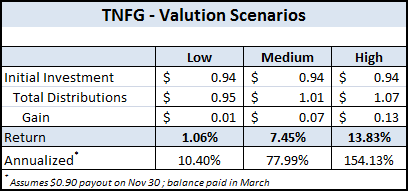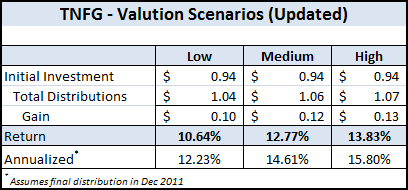I’ve been a moderately satisfied brokerage customer at Zecco for almost 3 years. I was initially attracted to the broker for sole purpose: free trades.
At the end of last month, Zecco announced a significant change in their trading policy (emphasis mine):
“When Zecco Trading first launched in 2006, our focus was to deliver a good, solid service at a bare bones price. In the four and a half years since that launch however, our customers’ needs have evolved quite a bit. While investors today certainly value low commissions, they also demand a great trading service with a rich set of advanced features.
To better support this balance between offering remarkable value and continuing to deliver the innovative new technologies, tools and services that Zecco Trading customers require, we are modifying our commission structure. Starting on March 30, 2011, our new commission rates will be:
Equity trades: $4.95 per trade*
Options trades: $4.95 per trade, plus $0.65 per contract
With this change we are no longer offering 10 free trades per month. As before, there are no minimum balance requirements or inactivity fees to open or maintain a Zecco Trading account.”
While the new commission structure is reasonable, I’m disappointed in the news.
Broker History
I started out my investing career at Scottrade. For a discount broker, Scottrade had a nice interface, great customer support, and reasonable commissions.
However, with a small amount of starting capital, commissions – even $7 flat fee commissions – had a not-insignificant effect on the growth of my account balance.
While I consider myself a long-term investor, I am constantly adding capital to my brokerage account, meaning I’m often adding to positions every month.
In addition, after the first year, I started out getting into more special situations or workout investments. Scottrade, along with many other brokers, charges a “voluntary reorganization fee” for tenders or stock conversions.
The fee usually starts around $25, which can significantly cut into the profits for odd-lot tender offers.
So I shopped around for a new broker, and ended up with Zecco.
Zecco Experience
Support at Zecco could be much improved, especially with the email support option.
There is a reason why Zecco ranks very low in customer service surveys.
Phone support is much better, but I personally was transferred around to several departments before finding a knowledgable person around special transactions like a merger arb situation or going private transactions.
Let’s face it: Zecco had built up its business on the promise of free trades.
Over the years, the free trade aspect has been drastically modified:
- From 40 free trades per month to 10 free trades per month
- Then from a $2,500 min qualifying balance to a $25,000 min qualifying balance
- And now to no free trades at all
The company has added additional community features and mobile options to its product mix, but as a (somewhat) sophisticated investor, the only thing I care about is the commission rate and order execution.
Time for a New Broker!
The latest change at Zecco removes the last remaining reason for continuing with their service. While it is a pain to switch, I’ll be making the move before the end of the month.
What I’m looking for in a broker:
- Ability to trade penny stocks with little or no additional fee (a must)
- Option to trade internationally at a reasonable cost (Canada & UK to start)
- No ‘reorg charge’ or other fee for tender offers or other special situations
- Execution speed and ease of buying illiquid securities
I probably make 5-10 trades per month (often because I’m building up a position in an illiquid security). I’d like to minimize my transaction costs and open up my stock trading universe.
Please leave a comment below or drop me an email with your broker suggestions.


